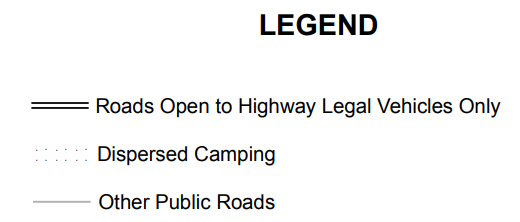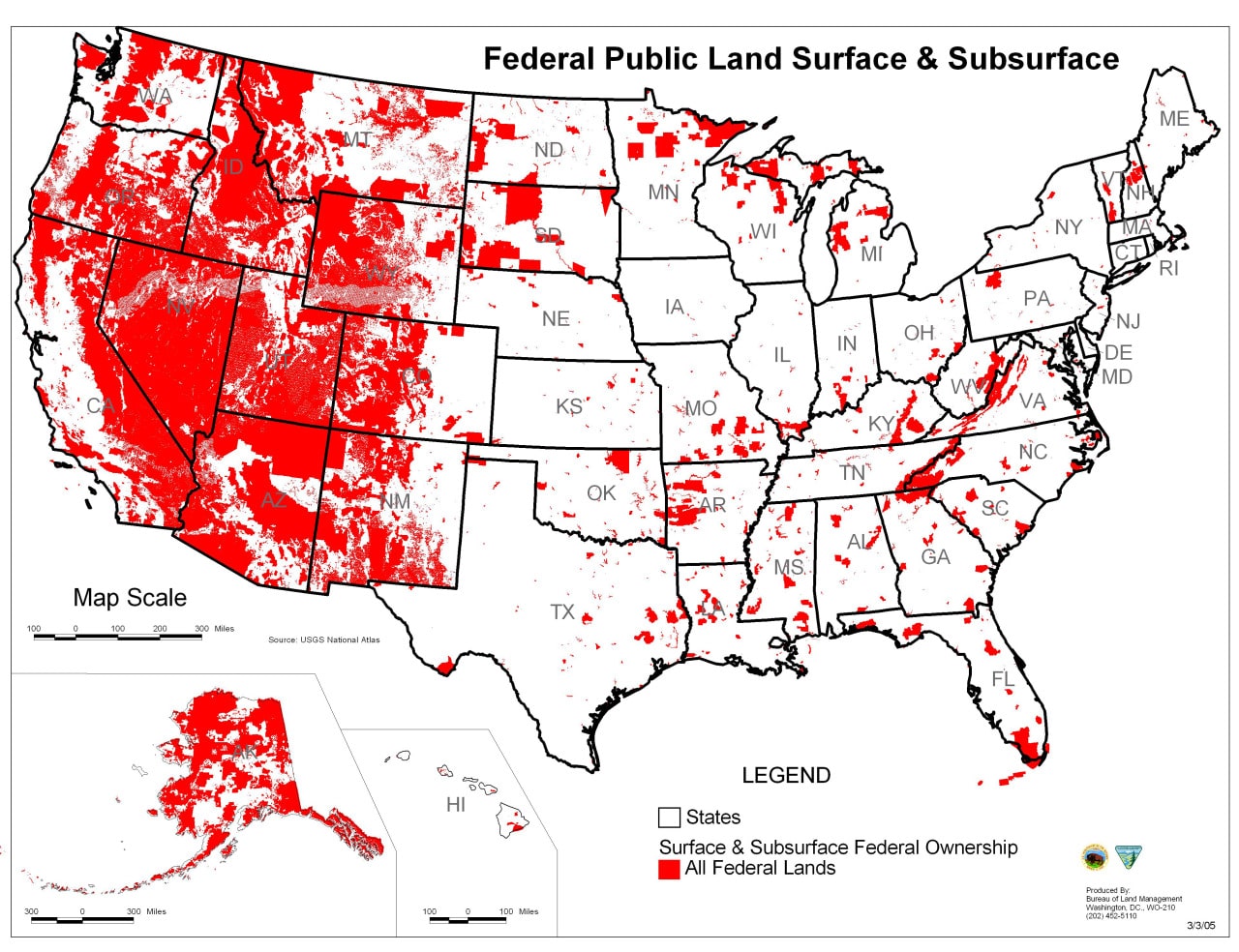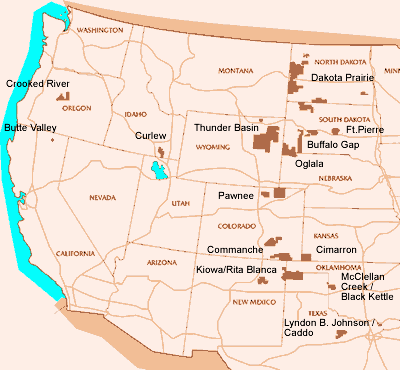Table of Contents
Words of Wisdom: “The most important thing is to be careful, esp when you’re alone… If you can’t recognize danger when you see it, this is not the life for you.” – TrainChaser1)
boondocking / dispersed camping / free camping
[Also see the Successful Boondocking sister article]
Boondocking or is the informal term campers use to mean camping without utility hookups. Australian campers sometimes say “free camping”.2) There is usually no fee associated with boondocking. .
Dispersed camping is a formal term that refers specifically to primitive camping in National Forests but similar access is available in other areas.
“Dispersed camping is the term used for camping anywhere in the National Forest OUTSIDE of a designated campground. Dispersed camping means no services; such as trash removal, and little or no facilities; such as tables and fire pits, are provided.”3)
When talking to a park ranger or other officials say “dispersed camping” for best results. Camping without hookups in cities or other developed areas is called stealth camping.
Dry camping might also refer to no-hookup camping outside the wilderness. ie, Wallydocking at walmart, or camping without utilities in a paid campsite.
practical issues
length of stay
While dispersed camping usually allows multiple night stays it is not for squatting or building structures. You are expected to do your recreation then move on. Check the local district and signage for local regulations.
The most common rule for dispersed camping in one place on BLM, Fish # Wildlife, and other non-NF land is a 14 day stay in any 28-day period, then mandatory relocation ≥25 miles away. Here is the language from the main BLM site:
Dispersed camping is allowed on public land for a period not to exceed 14 days within a 28 consecutive day period. The 28 day period begins when a camper initially occupies a specific location on public lands. The 14 day limit may be reached either through a number of separate visits or through 14 days of continuous overnight occupation during the 28 day period. After the 14th day of occupation, the camper must move outside of a 25 mile radius of the previous location until the 29th day since the initial occupation. The purpose of this special rule is to prevent damage to sensitive resources caused by continual use of any particular areas. In addition, campers must not leave any personal property unattended for more than 10 days (12 months in Alaska).
This means ≥2 sites are required for a rotation, and ≥29 days from Site 1 to Site 1:
- days 1-14 at Site 1
- days 15-28 at Site 2
- day 29 back at Site 1
Many National Forest districts limit stays in any NF4) to 14d in any 30d period, which causes some issues syncing camping and moving. We will need a ≥3 site rotation with ≥31 days from to NF 1 to NF 1.
- days 1-14 at NF 1
- days 15-28 at NF 2 (or non-NF land)
- days 29 - 30 at NF 3 (or some other non-NF land)
- day 31 - back to NF 1
services, or lack thereof
Assume there will be no water, trash, or toilet services. There may be no shade, or so much shade no solar harvest is possible. If you do find a free site with a pit toilet or trash cans use them appropriately and with consideration for others.
Open fires and firewood collection may be banned in some places/times. Have a camping stove for cooking in case you can't make a fire. When camping in areas that forbid firewood collection, park well away from fire rings. Nails may be present from the burning of wood pallets.
Note: California requires a free permit for fires, including stoves.
timing your arrival
At some times the areas may be overrun by weekenders (recreational weekend campers):
“During tourist season (Memorial Day to Labor Day), getting off paved roads usually gets me away from crowds. The exception to this is hunting and fishing openers. You might want to plan for some in city camping during these weekends.
” – Spaceman Spiff5)
To avoid competition from weekenders try to arrive at new sites mid-week. Arrive early enough in the day that you can see where you are driving and setting up camp.
If you need to run to town for reprovisioning or work, it is common to “save” your campsite by erecting a small tent or similar in the spot. Theft is rarely an issue but valuables should probably be left in your vehicle. Be sure to mark your campsite on the nav so you know how to get back to it!
elevation
Elevation can be an important part of the decision where to camp, as it affects ambient temperature. If the listing you are using does not show elevation you can find approximate elevation on a site like this.
where to boondock
The most common place to boondock is on US Federal lands, which is surprisingly massive:
Not all land is available for boondocking but this gives an idea of where boondocking on federal land is easier or harder to find.
National Forests
It is common for national forest (NF) boondocking to be limited to 14-16 days in one spot, after which one must move at least X miles away.6) Some areas have no stated length of time for return; others say days, one month, or one year. Some NFs like the Tonto National Forest require passes.
 The most important piece of information for boondockers is the MVUM (motor vehicle use map). These maps, available on paper at visitors centers or online, tell you where you can and cannot take your vehicle. A double row of dots indicates where dispersed camping is allowed.
The most important piece of information for boondockers is the MVUM (motor vehicle use map). These maps, available on paper at visitors centers or online, tell you where you can and cannot take your vehicle. A double row of dots indicates where dispersed camping is allowed.
 The dispersed camping symbols can be in an area or on either side of a roadway as shown here.
Note: in some areas only stoves with on/off valves are allowed:
The dispersed camping symbols can be in an area or on either side of a roadway as shown here.
Note: in some areas only stoves with on/off valves are allowed:
The use of commercially available portable lanterns, stoves, or heating equipment that utilize gas or pressurized liquid fuel is allowed. The stove must have an ON/OFF switch. No alcohol stoves. No hexamine or solid fuel cubes.7)
National Grasslands
National Grasslands (NG) are managed by the USFS and have similar rules and use.
As you can see in the map they are generally in the Western part of the U.S.
Bureau of Land Management areas
In this pic the lighter tan areas are BLM-managed land:
Boondocking at any given location is generally limited to 14 days on BLM land. Because the land is more extensive it is common to require a move 25 miles away after the 14 days has elapsed. Note that some heavily used areas like Quartzsite and Lake Havasu require (free) permits to camp on the BLM land – if there is a camp host check in with them.8)
An exception to the limit on stays are the Long Term Visitors Areas (LTVA) in California and Arizona.
Animal grazing is common on BLM lands and fences may be put up. Unless posted otherwise you may open go through gates; remember to close them again after you pass. The general rule is to leave gates how you found them; leave open if they were open and close them after passing if they were closed.
national monuments
National monuments are areas of federal land set aside by the Congress or most often by the president, under authority of the American Antiquities Act of June 8, 1906, to protect or enhance prominent or important features of the national landscape.9)
They are managed by BLM, USFS, NPS, Fish & Wildlife, etc.
Check the monument's website for dispersed camping opportunities.
US Bureau of Reclamation
The USBR maintains some paid campgrounds. [note: secessus is currently researching the possibility of dispersed camping, but it doesn;t look promising. – UPDATE: Poverty Flats is reported to be USBR.]
Their main site says:
There are some Reclamation project areas that do not have developed recreation facilities for public use; however, dispersed recreational opportunities such as hiking, photography, wildlife viewing, and fishing may be available in such areas.
National Parks
Camping in National Parks (NP) is usually restricted to defined (and sometimes $$$) campgrounds. For this reason they are more common with tourists than boondockers. Some NPs have boondockable land quite near the park, so boondockers can camp for free then enter to see the park.
Various passes are available for NPs. It may be worth skipping NPs on free admission days when they get deluged by casuals.
state trust lands
State trust lands have their own page, as they are often non free (low-cost permit required).
state forests
* Oregon Dept. of Forestry: “Dispersed camping is allowed in Oregon State Forests year round. There are no fee or permit requirements. Campers are required to adhere to ODF regulations regarding placement of campsites, campfires, sanitation, and stay limits. Campfires and charcoal barbeques are not allowed in dispersed campsites during the Regulated Use portion of fire season. There are no maps for dispersed campsites.”
wildlife refuges
Reguges managed by the US Fish and Wildlife Service may allow dispersed camping10). Some are day-use only or are accessible by foot only. There are often additional rules in place to protect wildlife. This example is from Kofa:
Campers may select their own campsites and are limited to camping 14 days in any 12 month period. Camping within one quarter of a mile of water is prohibited by Arizona state law. All vehicles must remain within 100 feet off of the road. Campfires are allowed but only dead, down, and detached wood may be used. Uprooting dead stumps, trees, and bushes is forbidden. In addition, dead wood may only be collected from areas on the refuge that are not designated as wilderness. Please consider bringing your own supply of wood as wood is very scarce.11)
rules for dispersed camping
Rules vary by specific area but these are common:
- 14 day stay, then relocate ≥25 miles away, and do not return for at least 28 days
- dispersed camping not allowed near (within miles) of any recreational improvement like “campgrounds, picnic areas, or trailheads.”12)
- talk to local rangers / hosts to see if any special conditions exist
- practice leave no trace camping
- camp no further than n-hundred feet from a road/trail allowing public motor vehicle use
- camp (and use cat hole toilets) no closer than n-hundred feet from any water source
- camp at the location no more than n days, after which move a minimum number of miles and not return to the site for a length of time. See below.
- camp in established (already used) spots to minimize additional damage. The presence of a fire ring is a good indicator of an established site.
- adhere to restrictions on fires and firewood
- you can generally go through any unlocked gates you find on public land unless indicated otherwise. If you find the gate open then leave it open. If you find the gate closed, unlatch it and pass,then relatch after you are through. This will keep grazing animals from wandering off.
- you are allowed to recreate on public land but not live on it permanently. So when talking to rangers you are traveling, camping, recreating, passing through, etc.
proving the length of your stay
In some heavily-used BLM areas13) a free permit is mandatory; it will show the date range you are allowed to stay. To get the permit check in with the civilian “camp host”, usually positioned near a main entrance and flying a flag. If the flag is up you can come up and sign in; if they flag is down they are “off duty”. Find a spot and watch to see when the flag goes up so you can register.
In most areas the length of stay is on the honor system, perhaps spot-checked by rangers. Sometimes rangers drive by noting vehicles or photographing plates. If they see the same vehicle after the allowed number of days they know that camper is violating the rules. It is also common for rangers just to chat or share local regs and information so don't be anxious if they stop to talk to you. They may remind you of the rules but they do this routinely during contacts and is no judgement on you.
It's not normally required or requested, but in areas with a great deal of lawless camping (or aggressive enforcement) you can distinguish yourself from squatters by keeping an especially-tidy campground and having supporting evidence for the duration of your stay:
- receipts from the last town you were at14)
- email district office when you arrive, including GPS coords and pic of your rig.





